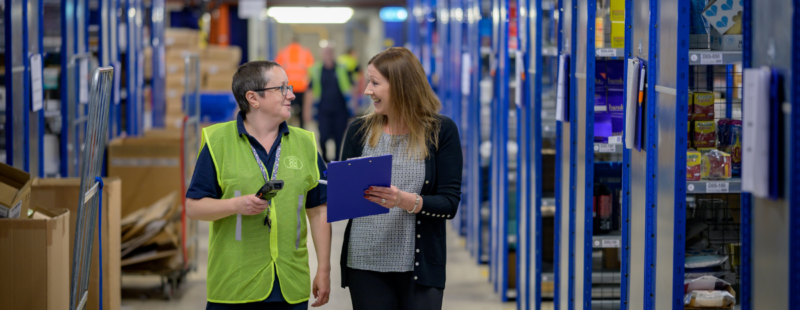Elle Thwaites is an AHRC-funded PhD candidate in sociology at the University of Leeds, and has recently been on placement with the Campaign to End Loneliness. In this blog, she explores the risk factors for loneliness among disabled people and what can be done to address it.
Loneliness amongst disabled people
Loneliness has received new-found levels of attention in recent years. The covid-19 pandemic got us all talking about the importance of social connection and the difficulty of experiencing loneliness.
Many of us felt lonely during the pandemic, but for those who were already affected by social isolation and loneliness, this experience wasn’t necessarily new. Experiences of social isolation and loneliness during the pandemic were highly unequal, and disproportionately affected people with disabilities.
This is an important reminder that although we can all feel lonely, some people are at a higher risk than others. How can we combat loneliness and social isolation amongst disabled people?
Disability as a risk factor for loneliness
There are around 16 million disabled people in the UK, and instances of disability increase across the lifecourse. 11% of children are disabled, as are 23% of working-age adults, and 45% of pension age adults, according to the disability equality charity Scope. People with disabilities have been shown to be at risk of loneliness – so in the UK, this is a significant number of people who could be more likely to feel lonely.
Recent research has shown that disabled people in the UK are more likely to feel substantially lonely (25%), compared to adults with no disability (6%). In 2021, research by the disability charity Sense showed that nearly two thirds (61%) of disabled people were chronically lonely, and this was even higher (70%) for young disabled people. So not only are this group more likely to feel lonely, they are also more at risk of experiencing chronic loneliness – which means that someone feels lonely often or always.
What contributes to these high levels of loneliness?
Experiences of disability and loneliness both vary, and there are many reasons why disabled people might be more likely to feel lonely.
Limiting long-term disabilities can be isolating. Having mobility difficulties may restrict someone’s ability to participate in (or get to and from) activities, reducing the opportunity to meet people and build social connections. Living with chronic pain too can be very difficult, and might reduce someone’s capacity for social interaction.
However, it may not always be the impairment itself that leads to feeling loneliness – but social structures that result in feelings of not belonging. One useful way of thinking about why disabled people experience high levels of loneliness, is to consider the role of barriers from society.
The social model of disability says that people are disabled by external barriers from society. So, for example, a wheelchair user would not necessarily be disabled by their limited mobility, but by a physical infrastructure makes buildings inaccessible – like only having stairs. Another example would be people being disabled by public attitudes and social stigma.
Facing barriers like these on a regular basis could result in someone feeling like they don’t belong or aren’t accepted, leading to loneliness and isolation. A report by the charity hft highlighted how broader contextual circumstances – like a lack of support, and employment and financial constraints – can be a barrier to friendship and connection for people with learning disabilities.
Combating loneliness
Loneliness doesn’t have to be a byproduct of disability. On an individual level, the Marmalade Trust have some tips on overcoming loneliness for people with disabilities. On a wider level, we can focus on making changes to social structures and physical environments so that they are not disabling.
Improving physical space so that it is accessible can aid social connection between people using that space, and therefore contribute to reducing loneliness. Similarly, raising awareness, tackling stigma, and ensuring disabled people have appropriate support will contribute to an environment in which everyone is included and welcome. That way, everyone has an equal chance to build social connections.
We’ve recently updated some of our research, policy and practice webpages to reflect recent research and reports on loneliness. Read about the risk factors for loneliness (including disability and health conditions), facts and statistics, and the health impact of loneliness.





No comments on this article yet. Please feel free to submit a comment below.
By submitting a comment you grant Campaign to End Loneliness a perpetual license to reproduce your words and name/web site in attribution. Inappropriate and irrelevant comments will be removed at an admin's discretion. Your email is used for verification purposes only, it will never be shared.